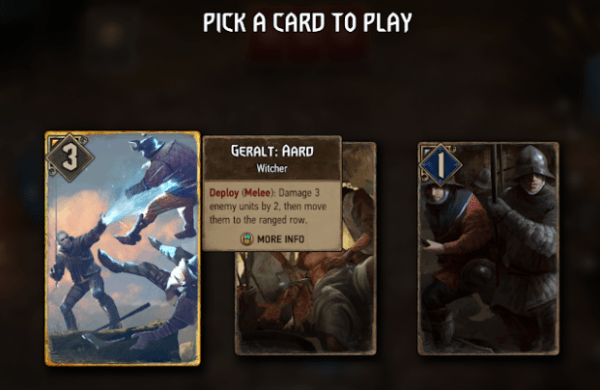
Owning Thronebreaker itself provides some premium cards in Gwent (which can be crafted regardless), and Gwent contains multiple Contracts with rewards varying from Reward Keys to cosmetics and titles based on Thronebreaker progress. Combat in the video game Thronebreaker: The Witcher Tales is in the form of a card-battle game similar to Gwent, but slightly different. Main article: Thronebreaker: The Witcher TalesĪ standalone, single-player campaign mode, Thronebreaker: The Witcher Tales, was also released alongside Gwent. A general matchmaking rating (used for leaderboard ranking) is then calculated from the average of their 4 best performing factions where they have played at least 25 matches for a faction to be considered at 100% of its rating, with the faction rating being used being their peak rating for that faction.
Gwent online review pro#
When entering Pro Rank, this rating is set to a base of 2400 for all factions. Players are also assigned a matchmaking rating for each faction, which respectively increases or decreases as a player wins and loses games. Certain gamemodes are locked behind a level requirement, such as the rotating seasonal mode requiring level 10 to play. Players can currently level up to Prestige 10. Players automatically "prestige" after reaching level 60, which grants them permanent account rewards such as guaranteeing a rare card within the first 4 cards of a keg. The level system works on a numerical scale of 1-60, with no effect on ranking or matchmaking. This also applies for Pro Rank, where if players do not finish within the top 500, they will be reset to Rank 3 for the next season. At the end of each monthly season, players de-rank by two from their current standing (ex. After ranking up from rank 1, players achieve 'Pro Rank', the entry point of Gwent Official Competitive Play, with invites to Gwent Open qualifiers for players in the top 64 of the Pro Rank Leaderboard. A player ranks up after accumulating 5 wins (or "Mosaic Pieces"), with a loss lowering the win counter by 1. Player ranks work on a numerical system from 1-30, with a new player starting at rank 30. Ranked takes place across a month-long season where players aim to increase in rank for better end-of-season rewards. Ranked Play matches players of similar rank and allows them to progress and regress through tiers, while Casual Play allows players to be matched against anyone without loss penalties. The game features several modes of gameplay.
Players are also awarded currency which can unlock nodes in the Reward Book, which unlocks cosmetics like avatars and other crafting materials or currency for kegs. Using the "Good Game" button after matches also rewards crafting materials. Players can also craft the animated, or Premium, versions of their cards. Each keg contains five cards, with the first four being of lower rarity and the fifth being of higher rarity and selected from a spread of three cards. Rewards include crafting materials for cards and card packs, or "kegs," which can also be purchased through microtransactions. Round wins go toward daily quests and Gwent's battle pass system, Journey. Decks are made up of bronze cards, which the player can have two copies of in their collection and deck, and gold cards, of which players can only own one copy. Each card has a Provision Cost, and only neutral cards and cards from the selected faction can be added to a deck. A minimum of 25 cards is required, with at least 13 of those being unit cards that are played on the field and have power (as opposed to special/artifact cards which are discarded upon use or remain on the field with no power).
Gwent online review plus#
The deck will have a 150 Provision Limit plus the Provision the leader adds on. The first to win two out of three rounds wins the game.Įach deck is built with a chosen faction combined with a unique leader ability. Rounds end when either both players pass to the next round, or when both players run out of cards. Each card can potentially have multiple special abilities, such as the ability to damage other units on deployment, boost other units' point value, spawn other units when given conditions are met, trigger an effect when destroyed, and lock another card's ability.

A player wins a round by having more points on board than their opponent. Each card has a certain power (which can be boosted or reduced), resulting in the player's points being the total of all of their cards. The goal is to win two of three rounds by playing cards to gain points called "power" on the board. In contrast to The Witcher 3: Wild Hunt 's variation of Gwent, the Siege row is removed, leaving two rows where cards can be played: the Melee and Ranged rows. Each deck belongs to one of six factions that offer different play styles. Players play one card each turn from a hand of 10 cards, chosen from a deck of 25.

Gwent is a turn-based card game between two players that can last two to three rounds.
Gwent online review update#
In-game screenshot, prior to the release of the Homecoming Update


 0 kommentar(er)
0 kommentar(er)
